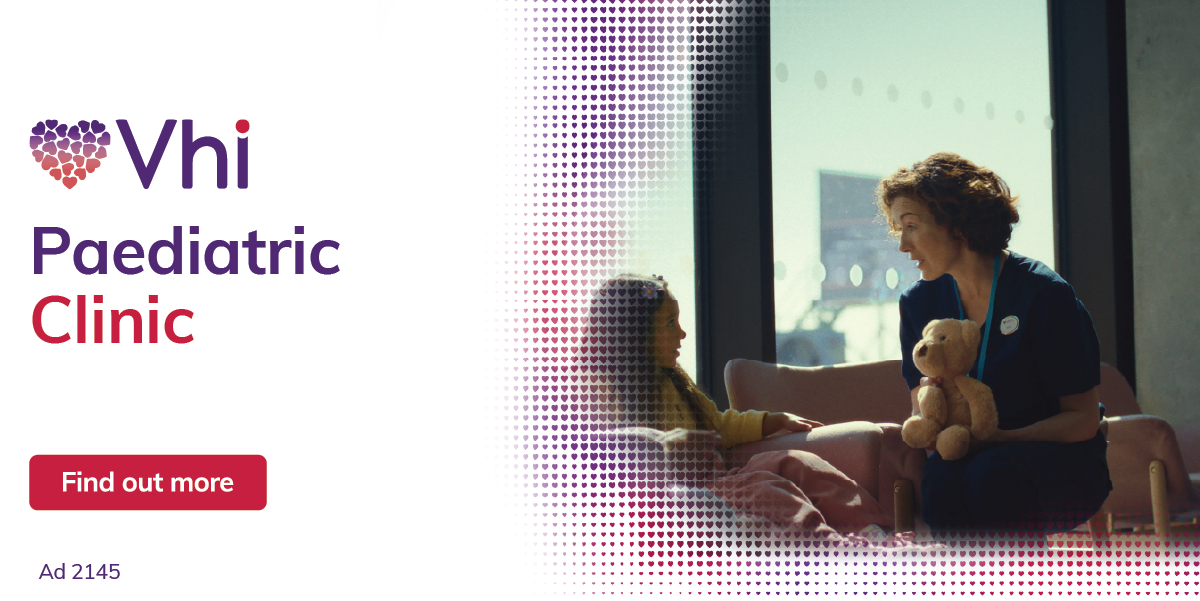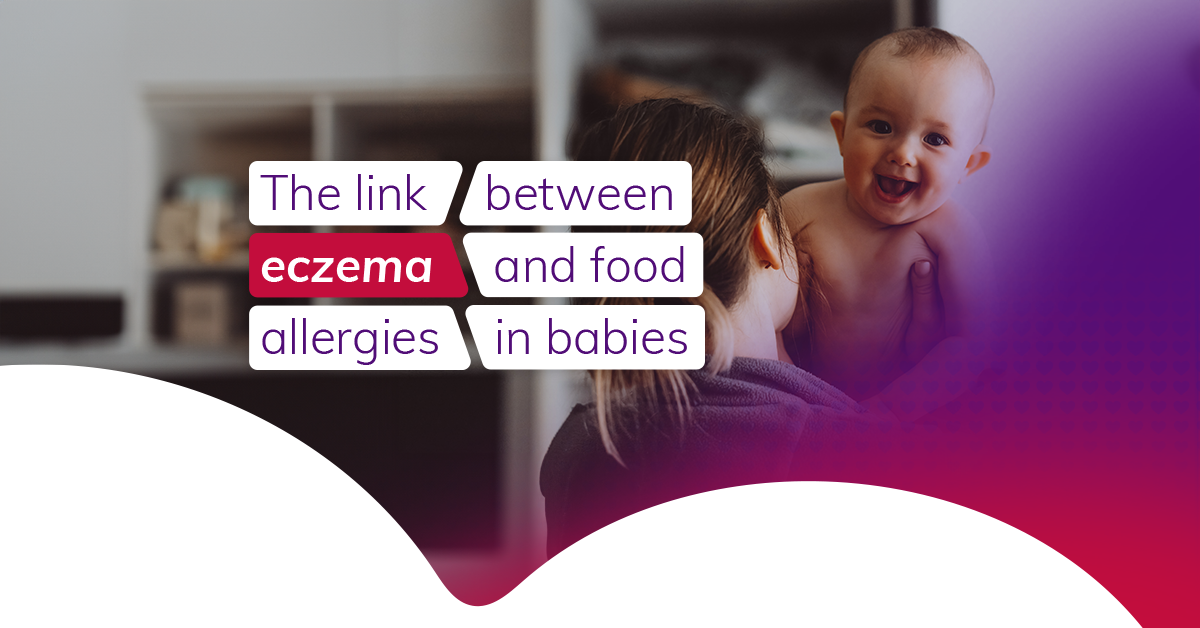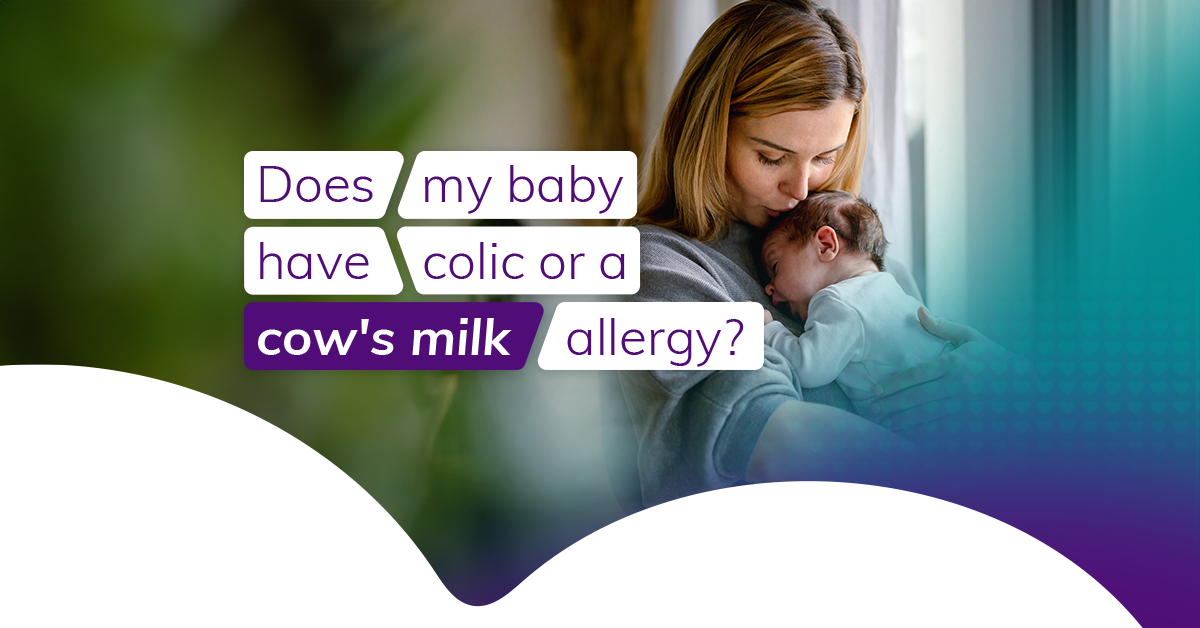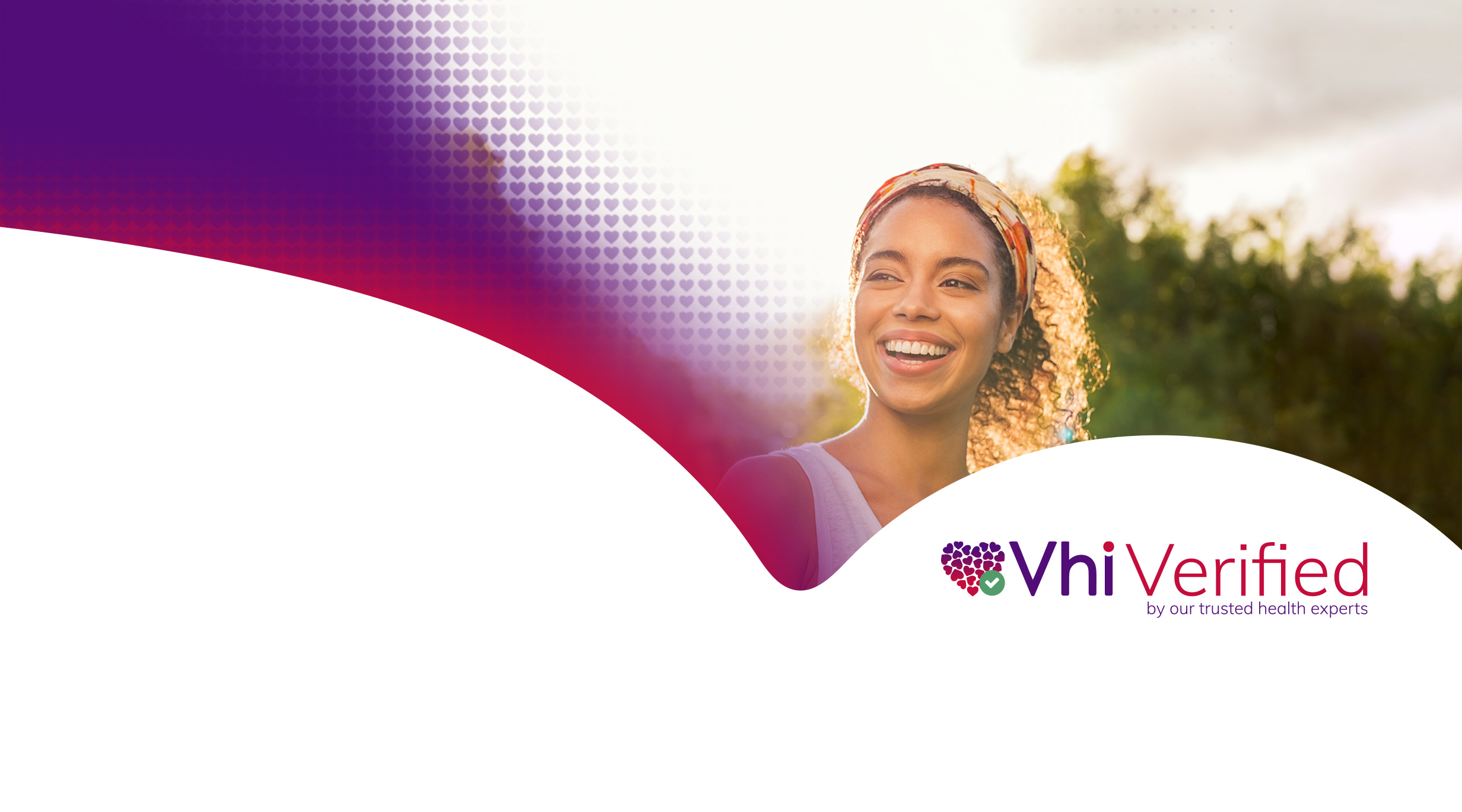
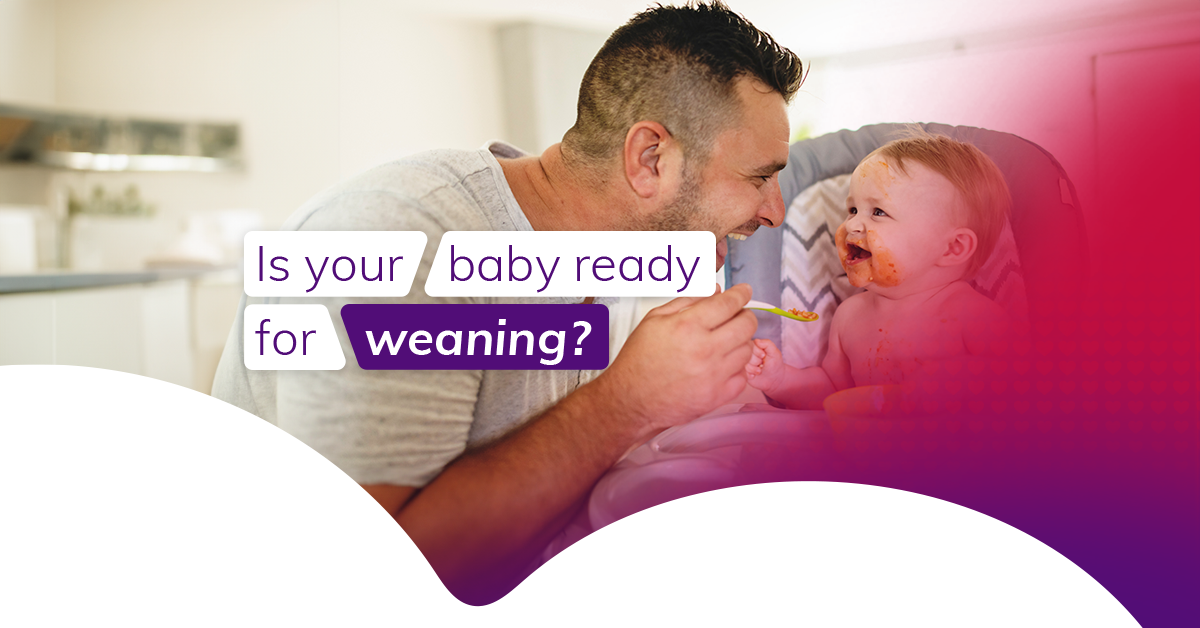
Is your baby ready for weaning? Signs and considerations
There are few things more exciting than watching your baby grow and learn from the world around them. Weaning is a big milestone in your baby’s development, and while it can feel a bit complex when starting out, you’ll get the hang of it in no time. Vhi consultant paediatrician, Dr Aisling Stafford, chats to us about the best time to start weaning, the signs your baby is ready, and what the three stages of weaning are.
Weaning when breastfeeding or formula feeding
You’ll already have one hundred and one things on your mind as a parent of a young baby, so let’s start with the basics! Weaning is what we call the stage of introducing a baby to solid foods. It should start when your baby is around six months old, no matter if they are breastfed or formula fed.
Here’s what to keep in mind if you’re breastfeeding:
- You don’t need to stop breastfeeding while you’re introducing solid foods to your baby’s diet. When solid foods are being introduced at six months, you can continue to breastfeed (this is known as complementary feeding) up to two years and beyond.
If you formula feed your baby:
- You can continue this while you introduce your baby to solid foods. This complementary feeding is advised until your baby is 12 months.[1] At this stage, you can swap to cow’s milk.[2]
When to begin weaning
All babies will develop at different stages, and introducing solids will be guided by both your baby and your healthcare provider (I’ll cover the signs that your baby is ready for weaning further on). It’s recommended not to give your baby solid foods before the age of four months (17 weeks, specifically). This is because the breastmilk or formula milk they’re drinking is nutritionally enough for them at that age. Aside from that, your baby’s kidneys and digestive system won’t be ready to handle solid foods before four months, and solid foods can even displace the important nutrients in breastmilk or formula milk when they’re this young.
It's just as important not to introduce solid foods to your baby’s diet later than six months’ of age. Once your baby reaches six months, they’ll need more energy for all the extra movement and play they’ll be doing! So, milk won’t meet these energy needs by itself anymore. Also, your baby’s store of iron from birth is used up by six months, and they’ll need more than they can get from milk alone. Weaning is important to help with development of the muscles your baby will eventually use for speech, plus the motor functions they’ll need to feed themselves and pick things up.
Signs your baby is ready for weaning
I mentioned above that both your healthcare provider and your baby will guide you on when it’s time to start weaning. Here are the signs that indicate your baby is developmentally ready for weaning:
- If they can sit up, unsupported, and control their own head movements.
- If they can focus on food, pick it up and put it in their mouths by themselves.
- Young babies have a natural response of pushing food back out of their mouths with their tongue when you feed them. Your baby needs to be able to fully swallow their food before you can begin weaning.
Another indication (once the three criteria above are met) is your baby’s interest in food. Say, for instance, they point at or reach for your food while you’re eating it, this shows a natural interest toward solid foods.
What solid foods to start your baby on
Weaning takes place over three stages, based on your baby’s age:
Stage one: is from four to six months (and never before 17 weeks). Begin with foods that are puréed thinly. Vegetables and fruits are perfect for this. Try foods like carrots, parsnips, broccoli, cauliflower, spinach, banana, apple, apricot and peaches. Including a wide variety (and not just the sweeter tasting fruit and veg) will develop their taste and familiarity with different textures. Well-cooked meats like poultry and fish (with all bones removed) are also fine to blend into purées. Baby rice is also fine at this stage. It’s important to introduce foods that can cause allergies (known as allergens), so your baby is less likely to develop an allergy to the food. You can make a purée with fruit or veg and one-by-one, add:
- Milk or natural yoghurt.
- Mashed up hard-boiled egg.
- A teaspoon of smooth peanut butter.
- Crushed nuts (only introduce each type of nut one-by-one).
- Mashed up fish with no bones.
Baby cereals will allow you to introduce wheat to your baby’s diet too. Don’t introduce more than one allergen at a time, but you can try a new allergen every 24 hours. That way, if your baby does have a reaction, you’ll have an idea of what caused it.
Each baby will be different, but the general recommendations for portions are:
- Start off with one teaspoon of one food (blended into a smooth purée), for one of your baby’s meals in the day.
- Over time, build this up to six teaspoons of purée for one meal.
- Then, start to give your baby solid food (still as a smooth purée), at a second mealtime in the day.
- Progress this to your baby having puréed food for two to three meals per day, with five to 10 teaspoons at each meal (this will be led by your baby’s appetite).
Some babies might take more than one teaspoon at their first spoon-feed and other babies might take a couple of days to get the hang of it, and that’s totally okay.
Stage two: is between six to nine months. Use the foods you’ve already introduced in stage one, and add things like breads, porridge, rice, pasta, cheese, yoghurts, smooth nut butters, peas, beans, lentils, and pasteurised cow’s milk (added to food rather than drank). You can now try thicker purées, well-mashed food, and soft finger food, so your baby can experience more textures. You’re aiming for three meals a day, with two to four tablespoons per feed, with two to three snacks in between meals.
It’s a good idea to encourage your baby to get involved in the feeding process; let them pick up and feel the different foods and feed themselves. Be ready for all the mess! But this will be great fun for your little one. If you’re doing complimentary feeding, always offer the solids to your baby before milk, or they’ll most likely fill up on milk and their appetite will be affected. Your baby will be perfectly fine to try drinking water from a beaker cup now.
Stage three: this is between nine to 12 months. By now, your baby can mostly eat whatever your family meals/your meals are, but without any added sauces, gravies, salt or sugar. You can let your baby try harder finger foods, lumpy or chopped foods and a mix of two textures in one meal. Foods like well-cooked pasta, unsalted crackers, mango slices, banana slices and strips of chicken are suitable for this. When it comes to portions, be led by your baby’s appetite; but general guidelines say three meals a day of four to six tablespoons, with two to three snacks in between meals.
Baby-led weaning
Baby-led weaning means letting your baby feed themselves with their fingers, rather than you spoon-feeding them from a bowl, which is known as spoon-led weaning. It’s up to parents which type of weaning they want to go with, and whether they want to do a combination of the two. It’s normal to be worried about choking with baby-led weaning, but research shows there isn’t an increased risk of choking with baby-led weaning compared to spoon-fed weaning; just always stay with your baby as they eat. The important thing is your baby is getting a good mix of foods, vitamins and minerals. The only time you shouldn’t let your baby feed themselves during weaning is the first time they try an allergen (such as milk, eggs, nuts, fish, shellfish). Read my blog, ‘A guide to introducing allergens during weaning’ for more details on introducing allergens while weaning.
This is such a fun time for you and your baby, and another great way to bond as your baby discovers the world of food! What I’ve discussed above are useful guidelines for weaning, and your baby will also guide the process with what they’re ready for and how much they need. Remember, your healthcare provider is always on hand to answer any questions you might have along the way.
This content is for information purposes only and is not intended or implied to be a substitute for professional medical advice, diagnosis, or treatment. Always seek advice from your GP or an appropriate medical professional if you have concerns about your health, or before commencing a new healthcare regime. If you believe that you are experiencing a medical emergency call 999 / 112 or seek emergency assistance immediately.
[2] https://www2.hse.ie/babies-children/bottle-feeding/deciding-to-bottle-feed-your-baby-from-birth
Meet our Vhi Expert

